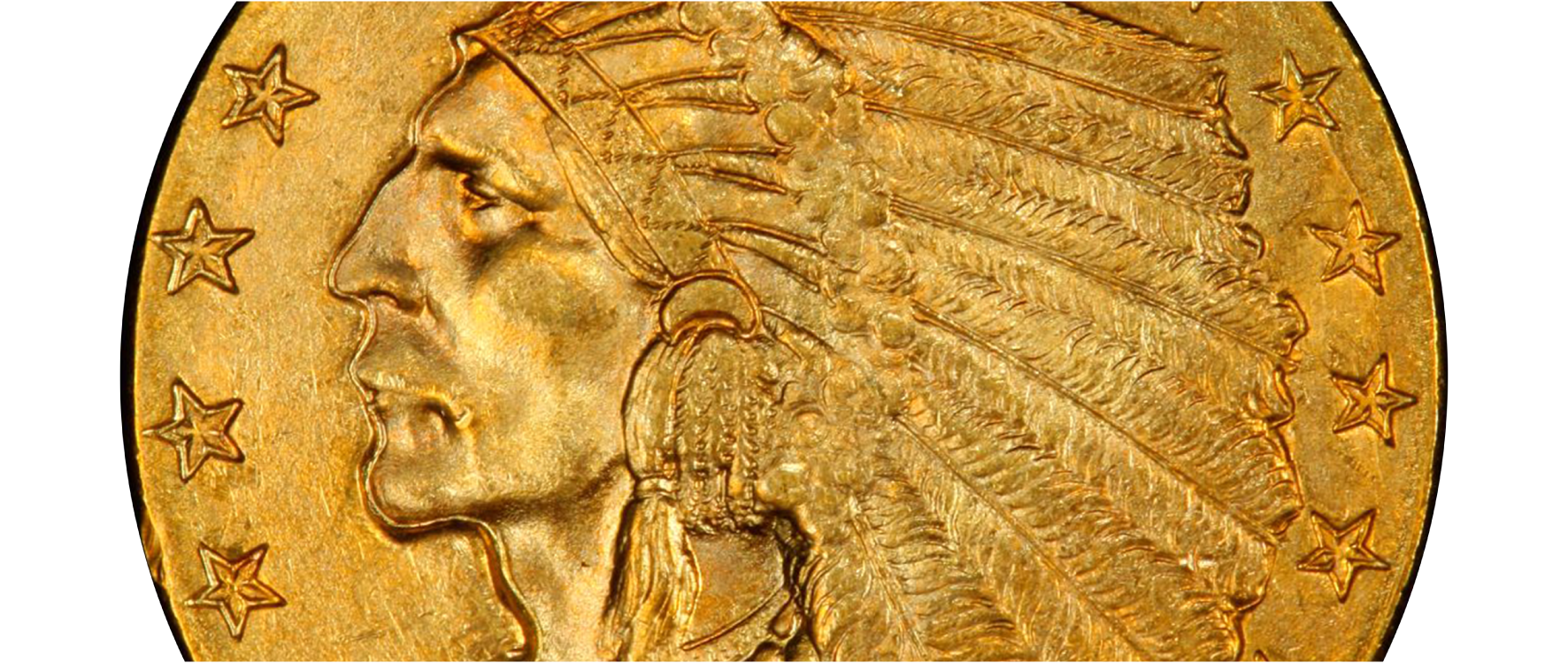Beautiful, unique, and rare are all words that have been used to describe the $2.50 Indian Head Gold Piece. However, one must not forget the historic importance of a coin that may have not had even existed if it wasn't for the assassination of President William McKinley.

President William McKinley
On September 6, 1901, with a pistol in hand, a crazed anarchist named Leon Cozlosz fired two shots into the chest of President William Mckinley. On September 14, just two weeks after the shooting, President McKinley died from the wounds left by Leon Cozlosz's bullets. After the death of President McKinley, a young hard-charging Vice President in Theodore Roosevelt was quickly thrust into the office of the presidency. This moment would not only change the history of our nation, but it would forever change American coinage.

President Theodore Roosevelt
During his presidency young Theodore Roosevelt accomplished many tasks such as the building of the Panama Canal, creating a world-renowned naval fleet, and stamping out yellow fever in several countries. Then, when Roosevelt won the presidency outright in 1904, he set out on a journey to redesign American coinage. This period would become known as the "Golden Age" of American coinage as it forever changed the way individuals, and other nations viewed American currency.

Sculptor and Coin Designer - Bela Lyon Pratt
It was Boston sculptor Bela Lyon Pratt that had the daunting task of redesigning our nation's $2.50 gold piece, which had stood unchanged for more than 40 years. A pupil of famous designer Augustus Saint-Gaudens, Pratt based the design of his $2.50 Indian on the "standing eagle" motif found on the reverse of President Roosevelt's unofficial Inaugural medal designed by famous designer and sculptor Augustus Saint-Gaudens.

The design of the $2.50 Indian set itself apart from all precedents in U.S. currency. Its design is unique unto itself and the main devices and legends are sunk into the gold rather than raised like the circulating coins of today. This incuse, or sunken relief, design is only featured on one other U.S. coin, the $5 Indian Head half-eagle, the $2.50 Indian Head Quarter Eagle's big sister. A proud war chief in full war bonnet is surrounded by the word "Liberty" and thirteen stars are featured on the front of the Indian Head Quarter Eagle. The reverse, or back, of the coin portrays Pratt's "standing eagle" as it sits perched atop a branch just below the words "United States of America".

Among its release, the $2.50 Indian was reviled, not only by the public who feared its recessed design would collect and spread germs but by numismatist who scorned the artistry of its design. Very few people saw the $2.50 Indian as a noteworthy, unique and historical, coin back in the early 1900s. As a result, few took the time to store them away for safekeeping, which in turn lead to few examples surviving the ravages of time in high, collector preferred, conditions. With time, the $2.50 Indian has gone from outcast to artifact of the early 20th-century and its rarity and historical significance are primary reasons why the Indian Head Quarter Eagles are highly sought after by coin collectors worldwide today.

The $2.50 Indian was first released by the U.S. Mint for circulation in 1908 and were struck in extremely limited numbers up until 1929. The $2.50 Indian Head Quarter Eagle circulated across the United States when the first ball drop in New York's Time's Square, during the hustle and bustle of the roaring '20s, and even during the beginning of the great depression. Since 1929, when the U.S. Mint halted production of the Indian Head Quarter Eagles, no other U.S. coin has bared the $2.50 denomination making the Indian Head Quarter Eagle the last $2.50 coin in American history.